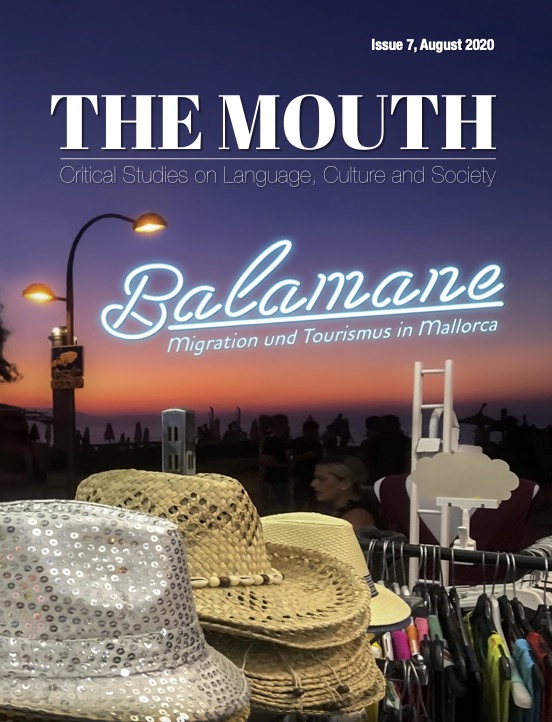The archaeology of intimacy in El Arenal
DOI:
https://doi.org/10.18716/ojs/the_mouth.2924Abstract
In established practice, archaeology is used as a method to relate to former cultures of humanity by the excavation of their artifacts or dwelling structures. But the discipline itself has evolved to have an enormous effect on the history making of societies. It is usually con- ducted by an elite that would decide which cultures are relevant enough to be studied, whose graves shall be exhumed and how they would be presented to the public afterwards. Especially in postcolonial contexts, this is regarded as highly problematic and has led to public political discussions. The criticism against the discipline to school a selection of academics that is enabled to write down the former past of other social and ethnic groups led some researchers to a shifting approach towards time and place. Studies emerged on ethnological archaeology of the contemporary world. Not ‘there‘, but ‘here’ was studied and archaeological methods were probed on their efficiency to help understand societies as they exist right now. Following these ideas, in this paper, I will use archaeology as a term to name the (re)construction of a society with its cultural processes by its material remains, finds and features (including architecture) in order to understand its dynamics and developments. This will happen within a particular case, as I will focus on material connected to intimacy and sexuality in the mass tourism site of El Arenal. Further, I will present a study on the effects of a discipline out of context, or rather a new context: the report of a small-scale excavation on the beach in front of a drinking arena during the high touristic season by night.
Downloads
Published
Issue
Section
License

This work is licensed under a Creative Commons Attribution 4.0 International License.
CC BY 4.0 deed
https://creativecommons.org/licenses/by/4.0/deed.en
You are free to:
- Share — copy and redistribute the material in any medium or format for any purpose, even commercially.
- Adapt — remix, transform, and build upon the material for any purpose, even commercially.
- The licensor cannot revoke these freedoms as long as you follow the license terms.
Under the following terms:
- Attribution — You must give appropriate credit , provide a link to the license, and indicate if changes were made . You may do so in any reasonable manner, but not in any way that suggests the licensor endorses you or your use.
- No additional restrictions — You may not apply legal terms or technological measures that legally restrict others from doing anything the license permits.
Notices:
You do not have to comply with the license for elements of the material in the public domain or where your use is permitted by an applicable exception or limitation .
No warranties are given. The license may not give you all of the permissions necessary for your intended use. For example, other rights such as publicity, privacy, or moral rights may limit how you use the material.Notice
This deed highlights only some of the key features and terms of the actual license. It is not a license and has no legal value. You should carefully review all of the terms and conditions of the actual license before using the licensed material.
Creative Commons is not a law firm and does not provide legal services. Distributing, displaying, or linking to this deed or the license that it summarizes does not create a lawyer-client or any other relationship.
Creative Commons is the nonprofit behind the open licenses and other legal tools that allow creators to share their work. Our legal tools are free to use.






